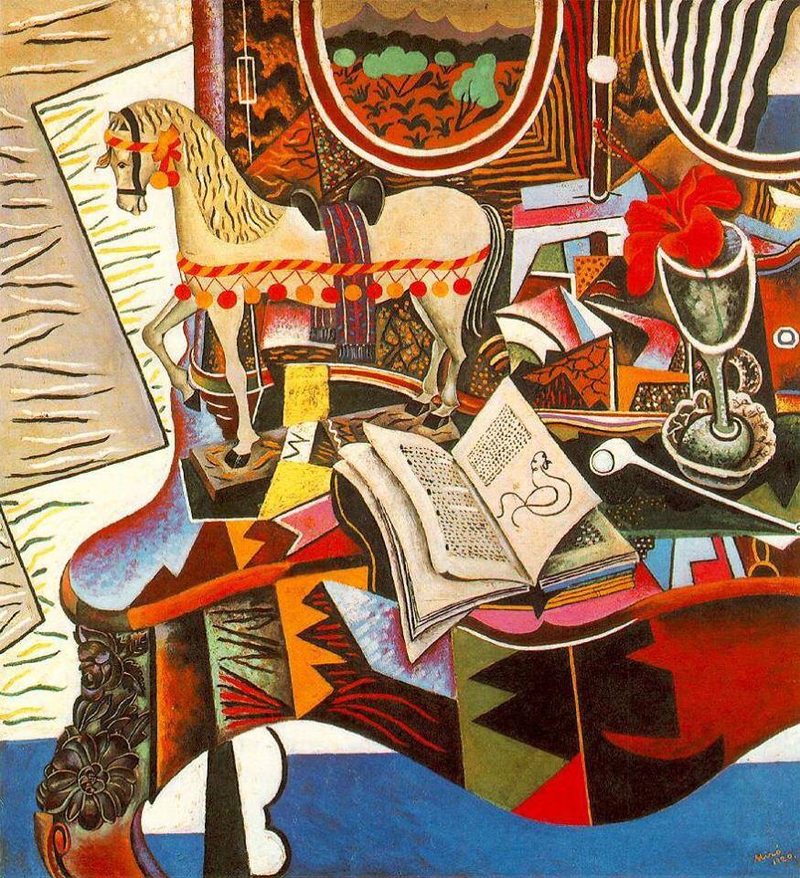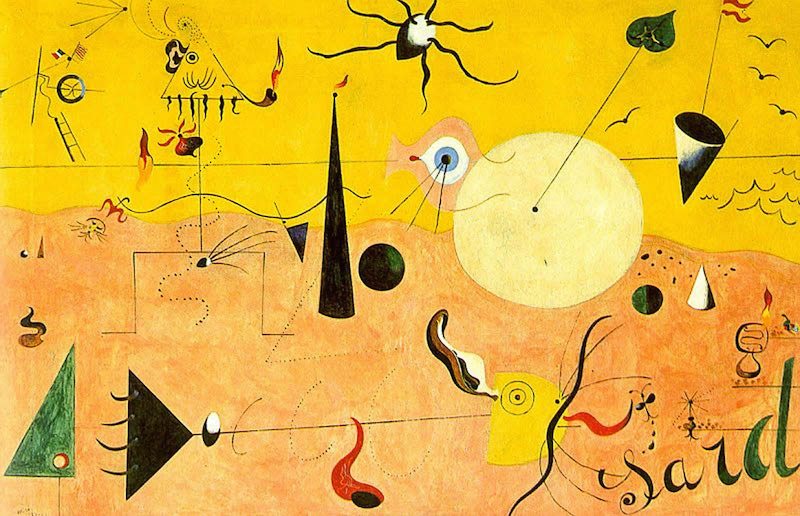Joan Miro
Episode #2 of the course “Great surrealist painters of all time”
Born in 1893, Joan Miro grew up in the Spanish countryside near Barcelona, an area that greatly influenced his artistic style. He showed great promise from an early age and became a master of painting, ceramics, engraving, watercolors, and even painting on copper and glass. His early art was inspired by Van Gogh and Cezanne, and he exhibited for the first time in Barcelona in 1918.
 Horse, Pipe, and Red Flower
Horse, Pipe, and Red Flower
His early art includes bright landscapes and still life, such as Horse, Pipe, and Red Flower, which played with perspective and depth in form. Highly detailed in his work, Miro began to turn toward Surrealism after a trip to Paris in the early 1920s. Experimenting with line, form, color, and balance, Miro created scenes with distorted, interrupted connections between the objects. His paintings The Tilled Field and Catalan Landscape (The Hunter) of 1924 are commonly considered his first Surrealist works.
 Catalan Landscape
Catalan Landscape
 Spanish Dancer
Spanish Dancer
Miro’s style became increasingly abstract, and he used fewer subjects in later art. He developed his own “pictorial language” where he would repeat simplified symbols and shapes as representations. Miro worked on over 200 books, and his symbolism continued through these works and paintings, including his Spanish Dancer series. Because of Miro’s combination of illusion and fantasy into the everyday—his way of making the ordinary extraordinary—his art is often associated with the magical realism genre of Spanish literature.
 Wall of the Moon
Wall of the Moon
 Wall of the Sun
Wall of the Sun
Showcasing around the world as a master of Surrealism throughout the 20th century, Miro’s work influenced a great deal of abstract artists that followed him. His most celebrated works from the later decades of his life are the ceramic pieces Wall of the Moon and Wall of the Sun, which are on display at the UNESCO building in Paris. After Miro’s death in 1983, the walls were moved inside to protect them from weather damage.
Share with friends

